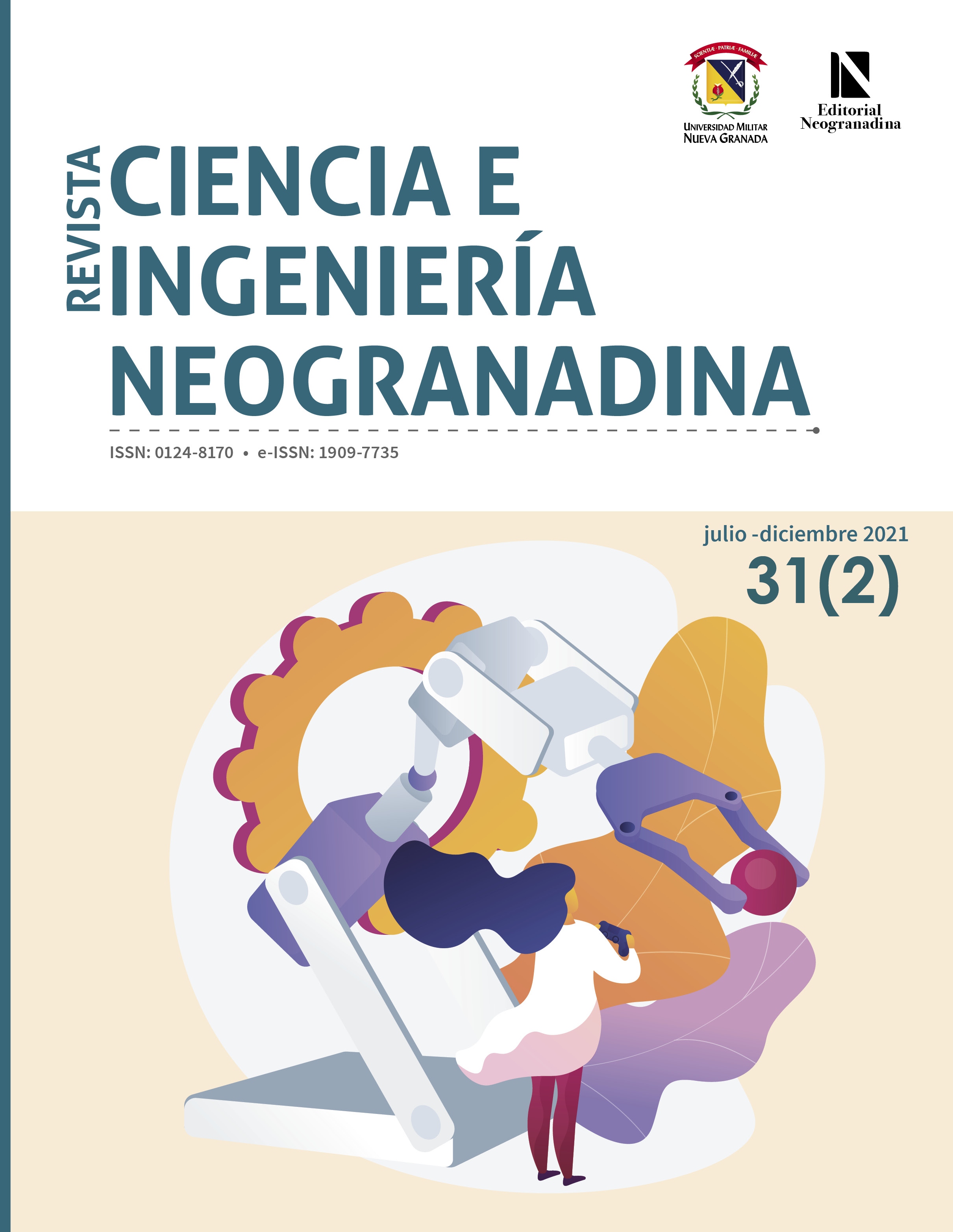Propiedades dieléctricas de asfaltos
revisión
Resumen
El asfalto es un material complejo cuyo desempeño depende en gran medida de su composición química. En el mundo, se han realizado múltiples estudios para intentar correlacionar las propiedades físico-químicas de estos materiales, con el fin de intentar comprender su desempeño ante solicitudes de carga y condiciones medioambientales, similares a las que experimentan cuando forman parte de una mezcla asfáltica en un pavimento. A pesar del amplio número de investigaciones realizadas en estas áreas, el complejo comportamiento viscoelástico que caracteriza a estos materiales amorfos aún no ha sido totalmente entendido. Una técnica que podría ayudar a mejorar el entendimiento de asfaltos es la espectroscopía de impedancia eléctrica compleja. Mediante esta, se pueden medir y evaluar las propiedades dieléctricas de estos materiales, las cuales podrían ser correlacionadas con aquellas de carácter físico-químico. En el presente artículo, se presenta una revisión bibliográfica sobre los estudios realizados a la fecha para medir y analizar propiedades dieléctricas en asfaltos. Se describen los estudios y se reportan las limitaciones de los mismos.
Descargas
Agencias de apoyo:
Universidades participantesReferencias bibliográficas
J.G. Speight, The Chemistry and Technology of Petroleum, Nueva York: Marcel Dekker Inc., 1999. doi: https://doi.org/10.1201/9780824742119
P. Redelius y H. Soenen, (2015, en. 15). "Relation Between Bitumen Chemistry and Performance," Fuel. [Internet]. Vol. 140, pp. 34-43. Disponible en https://doi.org/10.1016/j.fuel.2014.09.044
R. Moraes y H.U. Bahia, (2015, sept. 10). "Effect of Mineral filler on Changes in Molecular Size Distribution of Asphalts During Oxidative Ageing," Road Materials and Pavement Design. [Internet]. Vol. 16, n. º S2, pp. 55-72. Disponible en https://doi.org/10.1080/14680629.2015.1076998
M.L. Selucky, S.S. Kim, F. Skinner et al., Structure-Related Properties of Athabasca Asphaltenes and Resins as Indicated by Chromatographic Separation Chemistry of Asphaltenes. Washington DC: Bunger J.W., Li N.C. (Eds), American Chemical Society, 1981, pp. 83-118. https://doi.org/10.1021/ba-1981-0195.ch006
P. Redelius, (2011, sept. 20). "Asphaltenes in Bitumen, What They Are and What They Are Not". Road Materials and Pavement Design, [Internet]. vol. 10, n. º 1, pp. 25-43. Disponible en https://doi.org/10.1080/14680629.2009.9690234
P. Kriz, J. Stastna, y L. Zanzotto, (2008). "Glass transition and phase stability in asphalt binders," Road Materials and Pavement Design. [Internet]. vol. 9, n. º sup1, pp. 37-65. Disponible en https://doi.org/10.1080/14680629.2008.9690158
S.A. Forough, F.M. Najad y H. Ziari, (2013, nov.). "Investigating the Relationship Between the Electrical Resistivity Characteristics and the Volumetric Properties of Asphalt Mixtures," Journal of Materials in Civil Engineering. [Internet]. Vol. 25, n.º 11, pp. 1692-1702. Disponible en https://doi.org/10.1061/(ASCE)MT.1943-5533.0000735
I. Androjić y A. Mikulić, (2018). "Influence of Volumetric Properties of Asphalt Samples on the Electrical Resistivity Characteristics," Road Materials and Pavement Design. [Internet]. Vol. 19, n. º 4, pp. 754-767. Disponible en https://doi.org/10.1080/14680629.2016.1273844
A. Arabzadeh, M. A. Notani, A. K. Zadeh et al., (2019, sept. 15). "Electrically Conductive Asphalt Concrete: An Alternative for Automating the Winter Maintenance Operations of Transportation Infrastructure," Composites Part B: Engineering. [Internet]. Vol. 173, 106985, 2019. https://doi.org/10.1016/j.compositesb.2019.106985
J.J. Farrar, "Electrically Conductivity Concrete," gec Journal of Science and Technology, vol. 45, n. º 1, pp. 45-48, 1978.
A. García, E. Schlangena, M. van de Ven et al., (2009). "Electrical Conductivity of Asphalt Mortar Containing Conductive fibers and fillers," Construction and Building Materials. [Internet]. Vol. 23, pp. 3175-3181. Disponible en https://doi.org/10.1016/j.conbuildmat.2009.06.014
Q. Liu, E. Schlangen, A. Garcia et al., (2010, jul.). "Induction Heating of Electrically Conductive Porous Asphalt Concrete," Construction and Building Materials. [Internet]. Vol. 24, n.º 7, pp. 1207-1213. Disponible en https://doi.org/10.1016/j.conbuildmat.2009.12.019
F. Chen y R. Balieu, (2020, oct.). "A State-Of-The-Art Review of Intrinsic and Enhanced Electrical Properties of Asphalt Materials: Theories, Analyses and Applications," Materials and Design. [Internet]. Vol. 195, 109067. Disponible en https://doi.org/10.1016/j.matdes.2020.109067
F. Chen, N. Taylor, N., Kringos et al., (2015, abr.). "A Study on Dielectric Response of Bitumen in the Low-Frequency Range," Road Materials and Pavement Design. [Internet]. Vol. 16, n. º sup1, pp. 153-169. Disponible en https://doi.org/10.1080/14680629.2015.1029682
T. Kara, D. Bozoglu, S. Yardim et al., (2020, en. 17). "Thickness Dependence of Dielectric Properties and Glass Transition Temperature of Bitumen," Road Materials and Pavement Design. [Internet]. Vol. 22, n. º 7, pp. 1637-1653. Disponible en https://doi.org/10.1080/14680629.2020.1713865
J. Stastna y L. Zanzotto, (1999, abr. 26). "Linear response of regular asphalts to external harmonic fields," Journal of Rheology. [Internet]. Vol. 43, n. º 3, pp. 719-734.Disponible en https://doi.org/10.1122/1.550996
P. Redelius y H. Soenen, (2005, abr. 15). "Correlation between Bitumen Polarity and Rheology," Road Materials and Pavement Design. [Internet]. Vol. 6, n. º 3, pp. 385-405.Disponible en https://doi.org/10.1080/14680629.2005.9690013
M. Parto, D. Deger, K. Ulutas et al., (2012, nov. 23). "Structure and Dielectric Behavior of TlSbS2," Applied Physics A. [Internet]. Vol. 112, pp. 911-918.Disponible en https://doi.org/10.1007/s00339-012-7446-9
P.B. Macedo, C.T. Moynihan y R. Bose, "The Role of Ionic Diffusion in Polarization in Vitreous Ionic Conductors," Physics and Chemistry Glasses, vol. 13, n. º 6, pp. 171-179, 1972.
J.C. Dyre, (1991, nov.). "Some Remarks on ac Conduction in Disordered Solids," Journal of Non-Crystalline Solids. [Internet]. Vol. 135, n. º 2.3, pp. 219-226.Disponible en https://doi.org/10.1016/0022-3093(91)90423-4
S.R. Elliott, (1994, my.). "Use of the Modulus Formalism in the Analysis of ac Conductivity Data for Ionic Glasses," Journal of Non-Crystalline Solids. [Internet]. Vol. 170, n. º 1, pp. 97-100. Disponible en https://doi.org/10.1016/0022-3093(94)90108-2
K.L. Ngai, (1998, jul. 21). "Relation Between Some Secondary Relaxations and the α Relaxations in Glass-Forming Materials According to the Coupling Model," The Journal of Chemical Physics. [Internet]. Vol. 109, n. º 16, pp. 6982-6994. Disponible en https://doi.org/10.1063/1.477334
I.M. Hodge, K.L. Ngai y C.T. Moynihan, (2005, en. 15). "Comments on the Electric Modulus Function," Journal of Non-Crystalline Solids. [Internet]. Vol. 351, n. º 2, pp. 104-115. Disponible en https://doi.org/10.1016/j.jnoncrysol.2004.07.089
T. Itoh, Y. Hamaguchi, T. Uno et al., (2006, en. 16). "Synthesis, Ionic Conductivity, and Thermal Properties of Proton Conducting Polymer Electrolyte for High Temperature Fuel Cell," Solid State Ionics. [Internet]. Vol. 177, n. º 1-2, pp. 185-189, 2006. Disponible en https://doi.org/10.1016/j.ssi.2005.10.006
A.K. Jonscher, (1977). "The 'Universal' Dielectric Response," Nature. [Internet]. Vol. 267, n. º 5613, pp. 673-679. Disponible en https://doi.org/10.1038/267673a0
K.L. Ngai, (1993, nov. 1). "Analysis of nmr and Conductivity-Relaxation Measurements in Glassy Li2S-Sis2 Fast-Ion Conductors," Physical Review B. [Internet]. Vol. 48, n.º 18, pp. 13481-13485. Disponible en https://doi.org/10.1103/PhysRevB.48.13481
K. Funke y R.D. Banhatti, (2006, oct. 15). "Ionic Motion in Materials with Disordered Structures," Solid State Ionics. [Internet]. Vol. 177, n. º 19-25, pp. 1551-1557. Disponible en https://doi.org/10.1016/j.ssi.2005.12.037
J.Q. Shang y J.A. Umana, (1999, dic 1). "Dielectric Constant and Relaxation Time of Asphalt Pavement Materials," Journal of Infrastructure Systems. [Internet]. Vol. 5, n. º 4, pp. 135-142. Disponible en https://doi.org/10.1061/(ASCE)1076-0342(1999)5:4(135)
I.L. Al-Qadi, S. Lahouar, y A. Loulizi, (2001, sept.). "In-situ Measurements of Hot-mix Asphalt Dielectric Properties," ndt&e International. [Internet]. Vol. 34, n. º 6, pp. 427-434. Disponible en https://doi.org/10.1016/S0963-8695(01)00010-X
Y. Zhai, B. Zhang, F. Wang et al., (2019, abr. 8). "Composite Dielectric Model of Asphalt Mixtures Considering Mineral Aggregate Gradation," Journal of Materials in Civil Engineering. [Internet]. Vol. 31, n. º 6, 1-11. Disponible en https://doi.org/10.1061/(ASCE)MT.1943-5533.0002642
Y. Zhai, Y. Zhong, B. Zhang et al., (2018, oct. 22). "Predicting the Dielectric Properties Based on Micromechanical Modeling for Asphalt Mastics," aip Advances. [Internet]. Vol. 8, 125311. Disponible en https://doi.org/10.1063/1.5075497
S. Wang, S. Zhao y I.L. Al-Qadi, (2019, abr. 7). "Real-time Monitoring of Asphalt Concrete Pavement Density During Construction Using Ground Penetrating Radar: Theory to Practice," Transportation Research Record. [Internet]. n. º 2673, pp. 329-338, Disponible en https://doi.org/10.1177/0361198119841038
C. Plati y A. Loizos, (2013, oct.). "Estimation of In-Situ Density and Moisture Content in hma Pavements Based on gpr Trace Reflection Amplitude Using Different Frequencies," J. Appl. Geophys. [Internet]. Vol. 97, p. 3-10. Disponible en https://doi.org/10.1016/j.jappgeo.2013.04.007
S. Sebesta y T. Scullion, (2003, en. 1). "Application of Infrared Imaging and Ground-Penetrating Radar to Detect Segregation in Hot-Mix Asphalt Overlays," Transportation Research Record. [Internet]. n. º 1861, pp. 37-43. Disponible en https://doi.org/10.3141/1861-05
T. Steiner, K. Hoegh, E. Z. Teshale et al., (2020, sept.). "Method for Assessment of Modeling Quality for Asphalt Dielectric Constant to Density Calibration." Journal of Transportation Engineering, Part B: Pavements. [Internet]. Vol. 146, n. º 3, 1-9. Disponible en https://doi.org/10.1061/JPEODX.0000210
A. Loizos y C. Plati, (2011, sept. 19). "Assessment of hma Air-Voids and Stiffness Based on Material Dielectric Values," Road Materials and Pavement Design. [Internet]. Vol. 12, n. º 1, pp. 217-226. Disponible en https://doi.org/10.1080/14680629.2011.9690360
D.A. Anderson, D.W. Christensen, H.U. Bahia et al., Binder Characterization and Evaluation. Vol. 3: Physical Characterization. Washington, DC: SHRP-A-369, 1994.
E.J. Jaselskis, J. Grigas y A. Brilingas, (2003, oct.). "Dielectric Properties of Asphalt Pavement," Journal of Materials in Civil Engineering. [Internet]. Vol. 15, n. º 5, 427-434. Disponible en https://doi.org/10.1061/(ASCE)0899-1561(2003)15:5(427)
S. Penzes y J.G. Speight, (1974, jul.). "Electrical Conductivities of Bitumen Fractions in Non-Aqueous Solvents", Fuel. [Internet]. Vol. 53, n. º 3, pp. 192-197. Disponible en https://doi.org/10.1016/0016-2361(74)90010-6
H.P. Maruska y B.M.L. Rao, (2007, mzo. 30). "The Role of Polar Species in the Aggregation of Asphaltenes," Fuel Science and Technology International. [Internet]. Vol. 5, n.º 2, pp. 119-168.Disponible en https://doi.org/10.1080/08843758708915850
J.M. Sowa, P. Sheng, M.Y. Zhou et al., (1995, ag.). "Electrical Properties of Bitumen Emulsions," Fuel. [Internet]. Vol. 74, n. º 8, pp. 1176-1179Disponible en https://doi.org/10.1016/0016-2361(95)00066-E
Z. Vlachovicova, J. Stastna y L. Zanzotto, "Shear Viscosity and Dielectric Permittivity on Asphalt Modified by sbs," Petroleum and Coal, vol. 45, n. º . 3-4, pp. 178-183, 2003.
T. Saarenketo, (1997, en. 1). "Using Ground-Penetrating Radar and Dielectric Probe Measurements in Pavement Density Quality Control," Transportation Research Record. [Internet]. n. º 1575, pp. 34-41. Disponible en https://doi.org/10.3141/1575-05
T. Saarenketo, Electrical Properties of Road Materials and Subgrade Soils and the Use of Ground Penetrating Radar in Traffic Infrastructure Surveys, Ph. D. dissertation, Facultad de Ciencia, Universidad de Oulu, Oulu, Finlandia, 2006.
R.S. Chow, D.L. Tse y K. Takamura, (2015, mzo. 12). "The Conductivity and Dielectric Behavior of Solutions of Bitumen in Toluene," The Canadian Journal of Chemical Engineering, [Internet]. vol. 82, n. º 4, pp. 840-845, 2004. Disponible en https://doi.org/10.1002/cjce.5450820425
H. Vralstad, Ø. Spets, C. Lesaint et al., (2008, my. 19). "Dielectric Properties of Crude Oil Components," Energy Fuel. [Internet]. Vol. 23, n.º 11, pp. 5596-5602. Disponible en https://doi.org/10.1021/ef900445n
M.B.A. Aziz, R. Muniandy, K. Abdullah et al., "Preliminary Determination of Asphalt Properties Using Microwave Techniques," arpn Journal of Engineering and Applied Sciences, vol. 5, n. º 11, pp. 70-81, 2010.
M. Ateeq, S. Wylie, A. Al-Shamma'a et al., (2012, jul. 10). "Microwave Spectroscopy: A Potential Technique to Analyse Bitumen Dielectric and Physical Properties," Measurement Science and Technology. [Internet]. Vol. 23, n.º 8, pp. 1-13. Disponible en https://doi.org/10.1088/0957-0233/23/8/085503
I.A. Adamu, M.M.A. Aziz, Y.K. Yeow et al., (2019). "Dielectric Measurement of Bitumen: A Review," iop Conference Series: Mater. Sci. Eng. Vol. 527, 012056. Disponible en https://doi.org/10.1088/1757-899X/527/1/012056
G.X. Yu, Z.M. Li, X.L. Zhou et al., (2011, my. 18). "Crumb rubber-Modified Asphalt: Microwave Treatment Effects," Petroleum Science and Technology. [Internet]. Vol. 29, n. º 4, pp. 411-417. Disponible en https://doi.org/10.1080/10916460903394102
M. Liang, X. Xin, W. Fan et al., (2017, ag. 5). "Thermo-Stability and Aging Performance of Modified Asphalt with Crumb Rubber Activated by Microwave and tor," Materials & Design. [Internet]. Vol. 127, pp. 84-96. Disponible en https://doi.org/10.1016/j.matdes.2017.04.060
C.M. Chang, J.S. Chen y T.B. Wu, (2011, febr.). "Dielectric Modeling of Asphalt Mixtures and Relationship with Density," Journal of Transportation Engineering. [Internet]. Vol. 137, n. º 2, pp 104-111.Disponible en https://doi.org/10.1061/(ASCE)TE.1943-5436.0000204
A.L. Lyne, N. Taylor, N. Jaeverberg et al., (2015, mzo. 12). "Low Frequency Dielectric Spectroscopy of Bitumen Binders as an Indicator of Adhesion Potential to Quartz Aggregates Using Portland Cement," Materials and Structures. [Internet]. Vol. 49, n. º 4, pp. 1327-1336. Disponible en https://doi.org/10.1617/s11527-015-0579-5
Q. Jiang, Q. Li, J. Li et al., (2018, mzo. 26). "A Real-Time Electrochemical Impedance Analysis for Water-In-Oil Emulsions of Bitumen Diluted with Naphtha," Chemistry Select. [Internet]. Vol. 3, n. º 12, pp. 3411-3416, 2018. Disponible en https://doi.org/10.1002/slct.201702633












